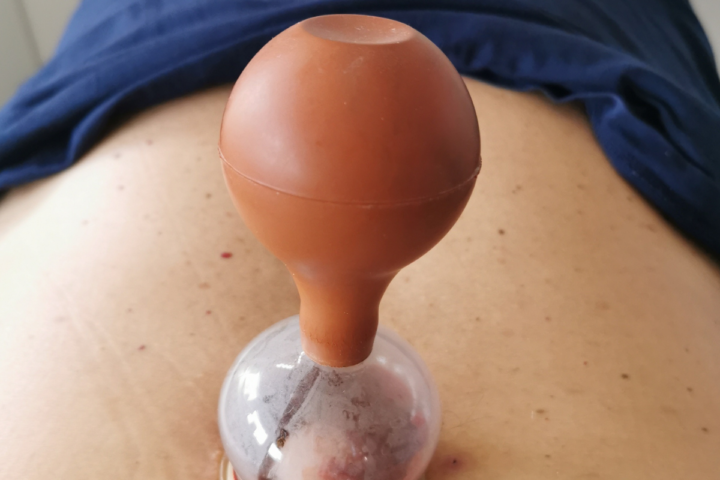Ulnar nerve groove syndrome is one of the most common compression neuropathies. Its prevalence is second only to carpal tunnel syndrome. The characteristic symptoms of this condition are pain, tingling, a feeling of numbness, muscle weakness and muscle atrophy. How can this condition be effectively treated? What physical activities can bring relief and improve the patient's condition?
What is ulnar nerve groove syndrome?
Ulnar nerve canal syndrome, also known as ulnar nerve groove syndrome, is one of the compression neuropathies, conditions associated with nerve damage caused by nerve compression. This condition more commonly affects men between the ages of 40 and 65, and symptoms usually manifest in the dominant hand. The causes of this syndrome can be due to a variety of factors, such as injuries to the elbow joint, degenerative processes and inflammation in the elbow area, a tendency to dislocate the nerve when bending the upper limb at the elbow joint, elbow valgus, as well as prolonged holding of the elbow joint, leaning on the elbow or frequent bending and straightening of the limb associated with work, for example.
Ulnar nerve groove syndrome - symptoms
The ulnar nerve has the function of overseeing proper sensation in the area of the ring finger and little finger (IV and V), and is responsible for the mobility of this part of the hand. For this reason, symptoms associated with ulnar nerve groove syndrome mainly affect this area.
The first signs of this condition include:
- unpleasant sensations (paresthesias) involving the little and ring finger, manifested as numbness, tingling or burning. They usually occur mainly at night and when bending the hand at the elbow joint;
- pain in the elbow and forearm region.
As the disease progresses, they also appear:
- a decrease in the strength of the hand muscles and difficulties in performing precise movements,
- Muscle atrophy, leading to the characteristic position of the hand in a so-called clawed position.

Diagnosis of ulnar nerve groove syndrome
Symptoms of ulnar nerve groove syndrome prompt patients to consult Primary Care. The doctor may refer the patient for a neurological, neurosurgical or orthopaedic consultation. At the initial diagnostic stage, a detailed history is taken, asking about the nature of the symptoms, their duration, any trauma to the elbow area, co-morbidities, occupation and physical activity.
The next step is the physical examination, where the doctor assesses the strength of the individual muscles of the hand, the sensation in the hand and the mobility of the elbow joints. He or she also checks whether pressure in the elbow region causes the patient pain. If ulnar nerve canal syndrome is suspected, the doctor carries out additional tests, including Tinel's sign and Froment's sign.
Tinel's sign is considered positive when tapping the ulnar nerve groove with a neurological hammer produces pain or paresthesias in the area innervated by the ulnar nerve. It is worth noting, however, that this symptom sometimes occurs in healthy individuals. When testing the Froment's sign, the doctor places a piece of paper between the patient's thumb and forefinger, trying to extend it. A positive result means that the patient resists this movement and flexes the thumb at the interphalangeal joint, which may indicate ulnar nerve dysfunction.
To make a diagnosis, the doctor orders electrophysiological tests such as electromyography (EMG) and electronegraphy (ENG), which assess the conduction of nerve impulses. In some cases, the doctor also opts for additional imaging tests, such as X-ray (X-ray), MRI or ultrasound (ultrasound). These procedures make it possible to accurately determine the extent and location of ulnar nerve damage.
Ulnar nerve groove syndrome - treatment
With mild symptoms and minimal ulnar nerve damage, the doctor may opt for conservative therapy. This involves:
- appropriately selected exercises;
- application of elbow immobilisation;
- modification of the patient's exercise habits;
- taking medicines such as non-steroidal anti-inflammatory drugs;
- additional intake of vitamin preparations and sometimes steroid drugs.

Surgical treatment
Operative treatment of ulnar nerve canal syndrome includes:
Surgical removal or cutting of the elements exerting pressure on the nerve,
Change in the position of the ulnar nerve,
In some situations, removal of the part of the humerus that forms the elbow joint (the medial epicondyle).
Ulnar nerve groove syndrome - exercises
Adapted rehabilitation and modification of the patient's habits are also important in the treatment of ulnar nerve groove syndrome. Physiotherapy includes cryotherapy, i.e. cold therapy, and exercises (kinesitherapy). In case of intense symptoms, temporary immobilisation of the limb may be necessary.
If the patient has tension and tenderness, kinesitherapy is based on muscle relaxation exercises. This is followed by isometric exercises, resistance exercises and exercises to improve the stabilisation of the limb. In addition, it is recommended to avoid prolonged leaning on the elbow, keeping the arms bent at the elbow joint and regular repetitive movements of bending and straightening the elbow.




